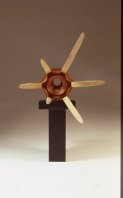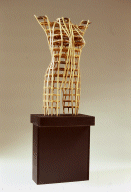|
The
Alternative Vessel
A
Thesis Presented to The
Wood Department Oregon
College of Art and Craft
In
Partial Fulfillment Of the
Requirement for the Bachelor
of Fine Arts in Crafts R.
Michael Torrey May 8, 2003 Approved for the Wood Department Sharon Marcus Thesis Advisor Committee Members Gavin O’Grady Michelle Ross
We all know what a vessel is. We all have an idea or picture that pops immediately into our heads when we hear the word. “It’s a boat,” we say, or “It’s a pot.” It’s something to ride in, or carry stuff in, or maybe if we’re biologically inclined, it’s a vein or an artery that carries blood. But there are other, lesser-known definitions of vessel. It is these alternative definitions that I have chosen to examine with my thesis work. In this paper, I am going to discuss the history of the word vessel, and propose a theory of how the word came to have such a wide range of meanings. I am going to discuss my own relationship to vessels, and how I became interested in the word and the idea of vessel. Finally I am going to discuss the specific works I have chosen to create for my thesis, and how they relate to the concept of vessel. Dictionaries have no shortage of definitions for Vessel. When I first began researching the subject, I came upon this set of definitions: ves·sel (vès¹el)
noun 1.
A hollow utensil, such as a cup, vase, or pitcher, used as a
container, especially for liquids. 2.
a. Nautical. A
craft, especially one larger than a rowboat, designed to navigate on
water. b. An airship. 3.
Anatomy. A duct, canal, or other tube that contains or
conveys a body fluid: a blood vessel. 4.
Botany. One of the tubular conductive structures of xylem,
consisting of dead cylindrical cells that are attached end to end and
connected by perforations. They are found in nearly all flowering plants. 5.
A person seen as the agent or embodiment, as of a quality: a
vessel of mercy.
The first two definitions are the most. Everyone knows a vessel is a cup or a vase or something that contains things, and we also all know that a boat is a vessel. But why? Why are two such disparate objects both termed ‘vessel’ in the English language?
My theory is that we have the Greeks and the Romans to thank. The ancient Greeks, and probably other cultures as well, used large pots as boats. Here is a depiction of Heracles riding in a pot boat on his way to the Hesperides. This image is found on an Athenian vase (or vessel) dated about 480 BCE.[ii] You could say that he’s both potted and on the pot. The root of the English word vessel is the Latin Vas. Perhaps the Romans saw images such as this, or used pots as boats themselves, and thus felt that the same term could apply to both.
The final definition in my set is applied to human beings. A vessel is a person seen as the agent or embodiment of some quality. People are said to be a vessel of this or a vessel of that. The Virgin Mary is said to be a Vessel of Mercy. Carry Nation was said to be a Vessel of Wrath. The reasoning behind this usage is unclear, but to me it evokes the image that the person is simply a container for this quality, that the body is chosen by some outside force to be filled up with this quality and therefore has no personal responsibility for it. I find I am of mixed emotions about this idea. It appeals to me on one level and repels me on another. I guess my discomfort has to do with the opposing ideas of free will and divine control. Do these people choose to be the vessels, or are they chosen by some higher power? Or is it that we, meaning the rest of society, simply choose to assign these qualities to these people for our own purposes?
At that point I started on the path that has led me
to this thesis work. My
subsequent work has been geared
< My thesis works are based on the final two “alternative” definitions for the word vessel, and on an additional definition or category that I feel fits in with the overarching concept of vessel. I will go into that additional information when I discuss that particular piece. In general, I worked with the idea of a wooden framework construction in various forms. I decided not to limit myself to staying with abstract or representational pieces, although I did allow formal issues to be prominent in the work, meaning I wanted the pieces to be graceful and aesthetically pleasing. Piece 1 – Vessel of Sustenance The vessel in its botanical meaning, as a means to transport sustaining fluids through a plant form, is the subject of my first piece. A vessel is formed in a plant when a string of cells collectively dissolve their interstitial boundaries and form a tube. These cells basically self-destruct in order to serve the greater good of the plant. In trees, only the hardwood varieties have this type of structure; softwood trees have a “more primitive structure,”[v] and the presence or absence of this structure, rather than the hardness or softness of the wood, is what differentiates the two. This piece is tall, like a tree, and segmented to suggest the cells. The bulkheads are pierced to imitate the dissolved cell walls. The strips widen at the base like roots, and at the top, like branches. It bulges in the middle to suggest the passage of nutrients. This piece is the most abstract of the three, and the simplest. I used steam-bending techniques to shape the outer strips, and finished the bulkheads with Tung oil. I want this piece to suggest growth and upward movement, fluidity and extension. This piece is based on the idea of a person as the
embodiment or container of a quality.
I chose to make this a female figure because of personal
aesthetics, and because the female body is often considered to be a
container for new life. I
choose Hope as the quality for this figure to embody because I believe
that conceptually, women embody the idea of new life, of refinement of the
environment, and of hope for the future. Hope fills the figure with light
and air. The piece is human scale, to suggest that Hope is
not a concept too big for us each to possess.
It is the most representational of the three, more complicated than
the first piece, but still relatively simple. . The bulkheads of this piece are shop-made plywood
with alternating dark and light layers to suggest strength in diversity,
which is an aspect of hope for our future as a species. The beech outer
strips are steamed and then attached onto the bulkheads directly. I built
an elaborate temporary support structure to hold the bulkheads in place
while I worked. Piece 3 – Vessel of
Transformation This third piece in the series embodies a
definition of vessel that I feel should be included, as it seems to meet
all the requirements. It is,
in essence, a cocoon. A
cocoon is a construction that is hollow and sealed.
Contained within the cocoon, a creature is transported from one
stage of life to another. Therefore I feel that a cocoon fits very easily
within the range of meanings that already exist for vessel. My cocoon is imaginary, yet recognizable in form.
In this way, it bridges the gap between the abstract quality of Piece 1
and the representational quality of Piece 2.
It hangs from the ceiling to suggest a natural formation.
It is open and inviting, even after its occupant has left. It
appears to be a place where a mental transformation is still capable of
happening. This is the most complicated of the three pieces,
involving fabric patterns and upholstery techniques. The ribs were steam
bent and then laminated. Assistance in producing the fibers Why did I choose the vessel, and more specifically
the Alternative Vessel, to be the subject of my thesis year work?
What have I learned in this year?
What will I carry forward into the future? The truth is that the subject chose me.
It began with my interest in boats and zeppelins and structures
made out of wood. It began
with Da Vinci drawings and the Wright brothers.
It began with something so deep and visceral I’m not even sure I
can identify it in words. To
me, there is something very compelling about the idea of sitting on
dockside in a canvas apron with a spoke shave carving just the right curve
on a piece of oak, surrounded by sawdust and shavings and the smell of the
sea. There is some thing
inside me that is drawn to the structure of an airplane wing; the parallel
bulkheads pierced with weight-saving holes in patterns that seem both
deliberate and arcane. I want
to create structures that express these feelings and inspire the same
feelings in those who view them. In
trying to define and solidify this rather ethereal area of interest, I
began to explore the more intellectual aspects of the subject.
I read about the origins of airplanes and the history of sea
travel. I studied skeletal structures, learning about both the engineering
and the aesthetic aspects. I looked at the work of artists who seem
fascinated by these same things, and I tried to corral and distill all
this information into something manageable for a body of work. This
process began several years ago, and has developed over time, so that at
the beginning of this year I had a fairly good idea of how to frame my
thesis. Meanwhile, I sketched and sketched and sketched.
I sketched ideas for pieces without thinking too much about the
concepts, caring mostly for the structural and formal aspects of the work,
and the feelings they invoked. I wanted to explore the Bulkhead and Strip form, to see how I
could use it to make both abstract and representational structures. By the
time the beginning of this year rolled around, I had a very good idea of
the forms I wanted to make. So then all I had to do was to marry the forms and
the thesis concept, which was not very difficult.
I suppose one could say that I have simply made rationalizations
for an essentially emotional choice of forms, that I have found ways to
fit the pieces I wanted to make into the subject matter. There is a
certain amount of truth to this. One could just as easily say that the
forms and the thesis subject matter developed together over time and that
intuitively I chose these forms because they would fit into the
thesis. I’m comfortable with that idea. In this my thesis year I have learned new ways to
construct the things I want to make.
I’ve learned that I am not alone in finding these forms
compelling, and that it is not necessary to understand the concepts behind
my work to appreciate the work. I’ve learned about word history and wood
structure and making plywood, and how many hours I can spend in a shop
with sawdust and screaming machinery before my hands get numb and my mind
turns to mush. I’ve learned
that my work better stand on its own merits, as I am not very good at
explaining it. I’ve learned that some people want everything to be created
logically while others value intuition. I’ve learned that I work both
ways. In the end, and I say ‘the end’ knowing that
there never really is an ‘end’, that the ending of one thing is the
beginning of another and over all is the continuation of the life that
spans all the beginnings and all the ends; in the end I have these three
pieces. Three pieces of work out of the many I imagined both before and
during the process of building them.
They can be the basis for a further exploration of the form, or the
jumping off point for a tangential trajectory.
I feel that I would much rather keep my concepts broad and general,
allowing the work to be influenced rather than dictated by them.
In the future, I will keep crossing that line between sculpture and
furniture. I will work both large and small scale. I will seek public art
commissions and experiment with speculative work. I came into school an artist, and I leave a much
better artist, armed now with vocabulary and with history and with
techniques and with, most of all, confidence in my own judgment and
intuition. Thank you. Studio Pottery – 20th Century British
Ceramics in the Victoria & Albert Museum Collection
by Oliver Watson © 1990 Phaidon Press Ltd. The Oxford English Dictionary 2nd
Edition © 1989 Clarendon Press Sky Sailors – The Story of the World’s
Airshipmen by Ces Mowthorpe © 1999 Sutton Publishing Ltd. Early Flying Machines – 1799 to 1909 by Charles
Gibbs-Smith ©1975 Eyre Methuen Ltd. Soft Sculpture & Other Soft Art Forms by Dona
Z. Meilach © 1974 Crown Publishers, Inc. NY The Pottery of Acatlan – A changing Mexican
Tradition by Louana M. Lackey © 1982 University of Oklahoma Press Ancient Chinese Bronze Art – Casting the
Precious Sacral Vessel by W. Thomas Chase © 1991 China House Gallery Studio Pottery – 20th Century British
Ceramics in the Victoria & Albert Museum Collection
by Oliver Watson © 1993 Phaidon Press Ltd. The Art of Craft – Contemporary Works from the
Saxe Collection by Timothy Anglin Burgard © 1999 Fine Arts Museums of San
Francisco Vessel of Wrath – The Life and Times of Carry
Nation by Robert Lewis Taylor ©1966 The New American Library, Inc. Gilded Vessel – The Lustrous Art & Life of
Beatrice Wood by Garth Clark Ships & Seafaring in Ancient Times by Lionel
Casson © 1994 University of Texas Press The Dictionary of Wood Wood and Canvas Kayaks http://www.scholars.nus.edu.sg/landow/post/pakistan/literature/suleri/binns9.html http://www.artlex.com/ArtLex/uv/vase.html http://www.artlex.com/ArtLex/uv/vessel.html http://potweb.ashmol.ox.ac.uk/PotVess0.html http://www.med.uiuc.edu/PathAtlasf/CVAtlas020.html http://biology.about.com/library/organs/heart/blblood.htm http://www.biologie.uni-hamburg.de/b-online/e06/06b.htm http://www.phoenix5.org/glossary/vas_deferens.html http://www.translatum.gr/dictionaries/download-english.htm http://cpmcnet.columbia.edu/texts/guide/toc/toc16.html http://www.ghministry.org/current_writings3.htm#Vessels
in the House of God http://www.hyperdictionary.com/dictionary/vessel http://www.siskoworks.com/sculptures/vessel.shtml http://www.lkesler.com/xkfa-modernvessel1.html http://www.mluther.org/vessel/ http://www.ndif.org/Terms/vessel.html http://www.levity.com/alchemy/vessel.html http://www.abodetao.com/subs/shop.cgi/page%3Dvessel.html http://www.figure2productions.com/FemTut/FemTutIntro.html http://www.handmaiden.org/vessel/ http://www.mystae.com/restricted/streams/scripts/glory.html http://matweb.hcuge.ch/Selected_images/Vas_deferens_images/Vas_deferens_images.htm http://www.timestar.org/vessel.htm http://www.xyleminteractive.com/ [i]Excerpted
from The American Heritage® Dictionary of the English Language,
Third Edition © 1996
by Houghton Mifflin Company. Electronic version licensed from INSO
Corporation; further reproduction and distribution in accordance with
the Copyright Law of the United States. All rights reserved. [ii] Page 6, Ships and
Seafaring in Ancient Times, Lionel Casson, 1994, University of Texas
Press [iii] Dictionary of Wood [iv] find this book |
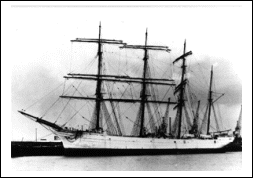
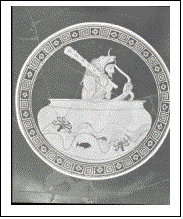
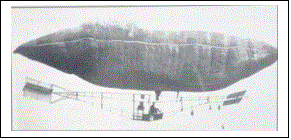
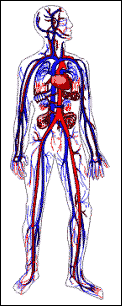 When
we look at the word vessel and its usage, we see that a vessel is
something that contains, often for the purpose of transport. Horse-drawn
carts, trucks, and railroad trains contain and transport things, but these
are not called vessels. Why not? There must be something specific about a
vessel to differentiate it from a non-vessel that performs a similar
function. Vessels are watertight. They are sealed in such a way to keep a
liquid in, or out, during transport. This is where the connection is, and
it is why airships, or dirigibles, are called vessels. Dirigibles are
sealed to contain the lighter-than-air gas that allows the ship to float
in the sky.
When
we look at the word vessel and its usage, we see that a vessel is
something that contains, often for the purpose of transport. Horse-drawn
carts, trucks, and railroad trains contain and transport things, but these
are not called vessels. Why not? There must be something specific about a
vessel to differentiate it from a non-vessel that performs a similar
function. Vessels are watertight. They are sealed in such a way to keep a
liquid in, or out, during transport. This is where the connection is, and
it is why airships, or dirigibles, are called vessels. Dirigibles are
sealed to contain the lighter-than-air gas that allows the ship to float
in the sky.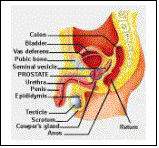
 When
we get to the fourth definition, the botanical one, we start to get into
less familiar territory, unless you happen to be a botanist. We can assume
that plants must have a way of getting nutrients from the ground up to the
leaves. It turns out that plants have several methods of doing this, but
one method involves the formation of vessels. The interesting thing about
the way plants form vessels is that rather than a collection of cells
growing into a tube
When
we get to the fourth definition, the botanical one, we start to get into
less familiar territory, unless you happen to be a botanist. We can assume
that plants must have a way of getting nutrients from the ground up to the
leaves. It turns out that plants have several methods of doing this, but
one method involves the formation of vessels. The interesting thing about
the way plants form vessels is that rather than a collection of cells
growing into a tube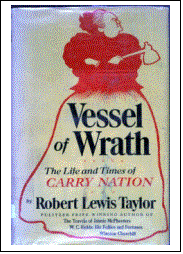 The
definitions are disparate, but to me they all suggest the qualities of
containment and transport. I believe that these are the essential
qualities that bring something or someone to be called ‘vessel.’
The
definitions are disparate, but to me they all suggest the qualities of
containment and transport. I believe that these are the essential
qualities that bring something or someone to be called ‘vessel.’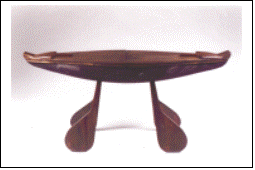
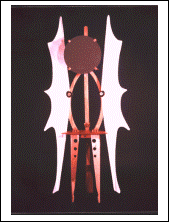 My
interest in the concept of vessel grew out of my interest in boats and
boat structures. As a child I was always interested in how things were put
together, how they worked. I was fascinated by things that seemed to
display their structure openly, such as bridges and electrical towers, or
that showed the inner structure through the outer surface, such as early
airplanes and zeppelins. Sails and wings hold great fascination for me, in
that they catch the unseen and utilize it.
My
interest in the concept of vessel grew out of my interest in boats and
boat structures. As a child I was always interested in how things were put
together, how they worked. I was fascinated by things that seemed to
display their structure openly, such as bridges and electrical towers, or
that showed the inner structure through the outer surface, such as early
airplanes and zeppelins. Sails and wings hold great fascination for me, in
that they catch the unseen and utilize it.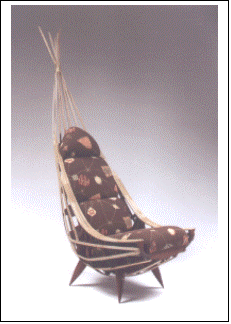 toward
exploring this theme. A chest of drawers was created by standing the boat
shape up on end and placing drawers between the bulkheads, and a boat
formwas bent in the middle to become a chair. This same type of structure
was used to create a windmill model and a tall grandfather-style clock.
The resulting form is open, yet creates an overall shape with an implied
surface. The forms have volume and presence, yet are not bulky. This idea
fascinates me. If you step inside a skeletal structure, can you truly say
that you are contained within that structure, when there is so much open
space around you?
toward
exploring this theme. A chest of drawers was created by standing the boat
shape up on end and placing drawers between the bulkheads, and a boat
formwas bent in the middle to become a chair. This same type of structure
was used to create a windmill model and a tall grandfather-style clock.
The resulting form is open, yet creates an overall shape with an implied
surface. The forms have volume and presence, yet are not bulky. This idea
fascinates me. If you step inside a skeletal structure, can you truly say
that you are contained within that structure, when there is so much open
space around you? When
I began my thesis year, I was planning a series of five sculptural pieces
that would explore the concept of vessel in its various definitions. As
time went on, I refined my plan to encompass only the more alternative
definitions, the ones less familiar to most of us.
When
I began my thesis year, I was planning a series of five sculptural pieces
that would explore the concept of vessel in its various definitions. As
time went on, I refined my plan to encompass only the more alternative
definitions, the ones less familiar to most of us.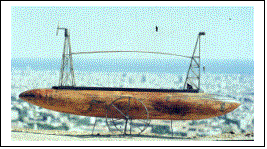 My
research over the last several years has been geared to help me with this
thesis work. I have researched skeletal structures in general and artists
in particular who use skeletal structure as inspiration. These artists
include Richard Deacon, Josep Riera y Arago, Martin Puryear, Vladimir
Tatlin, and Leonardo da Vinci.
My
research over the last several years has been geared to help me with this
thesis work. I have researched skeletal structures in general and artists
in particular who use skeletal structure as inspiration. These artists
include Richard Deacon, Josep Riera y Arago, Martin Puryear, Vladimir
Tatlin, and Leonardo da Vinci.